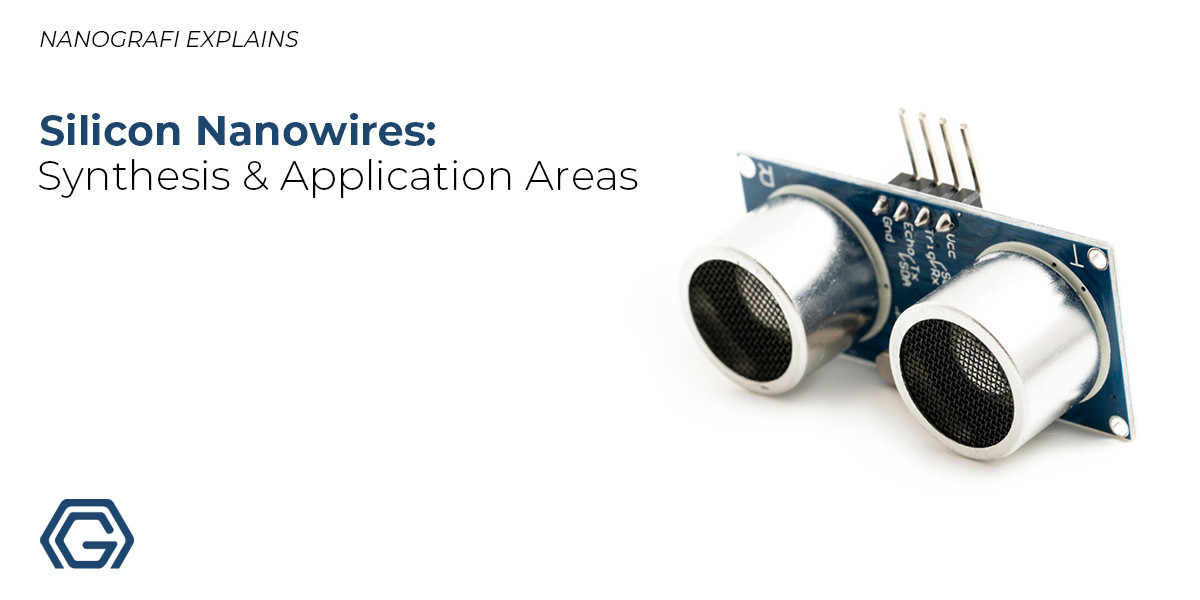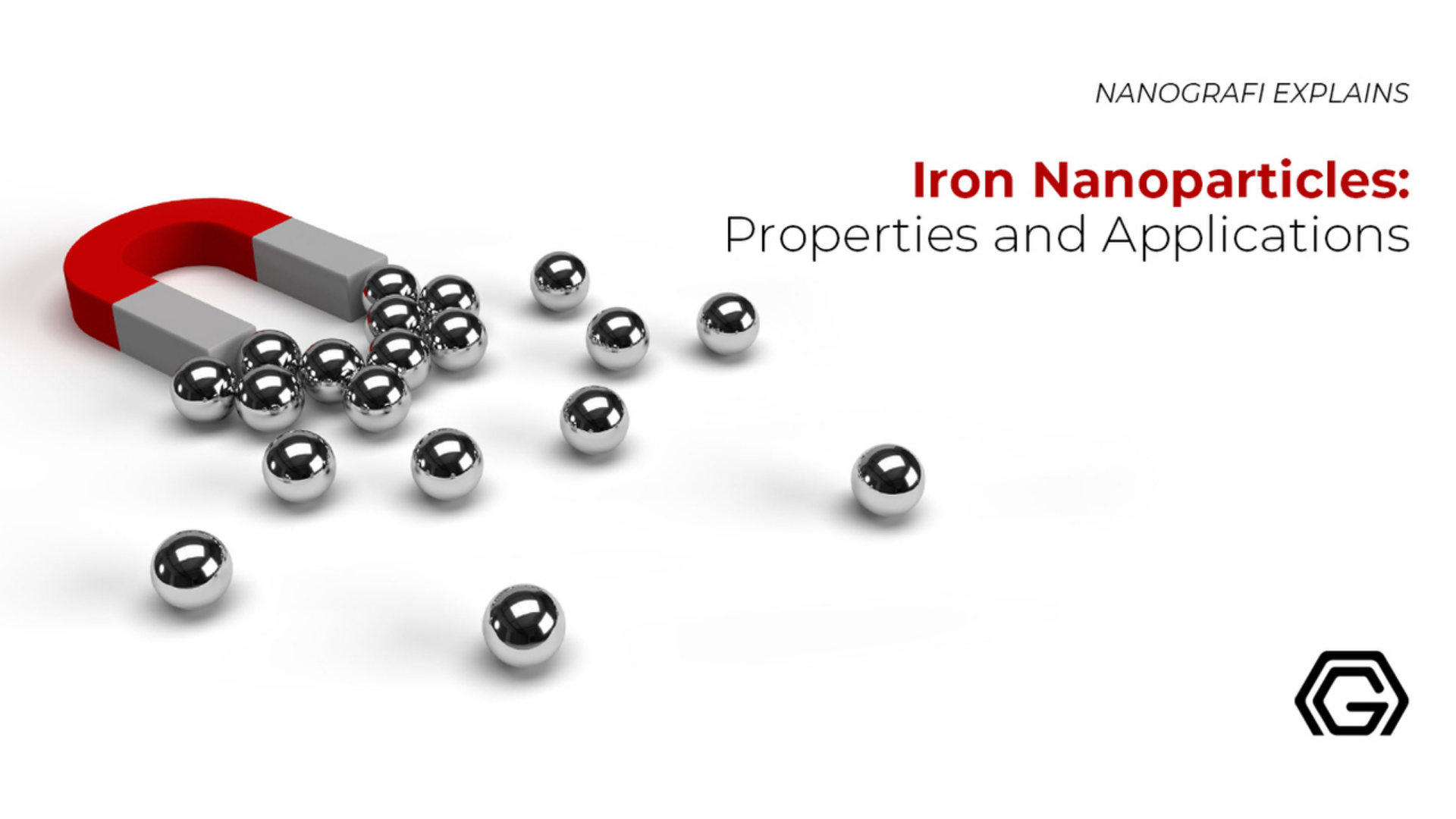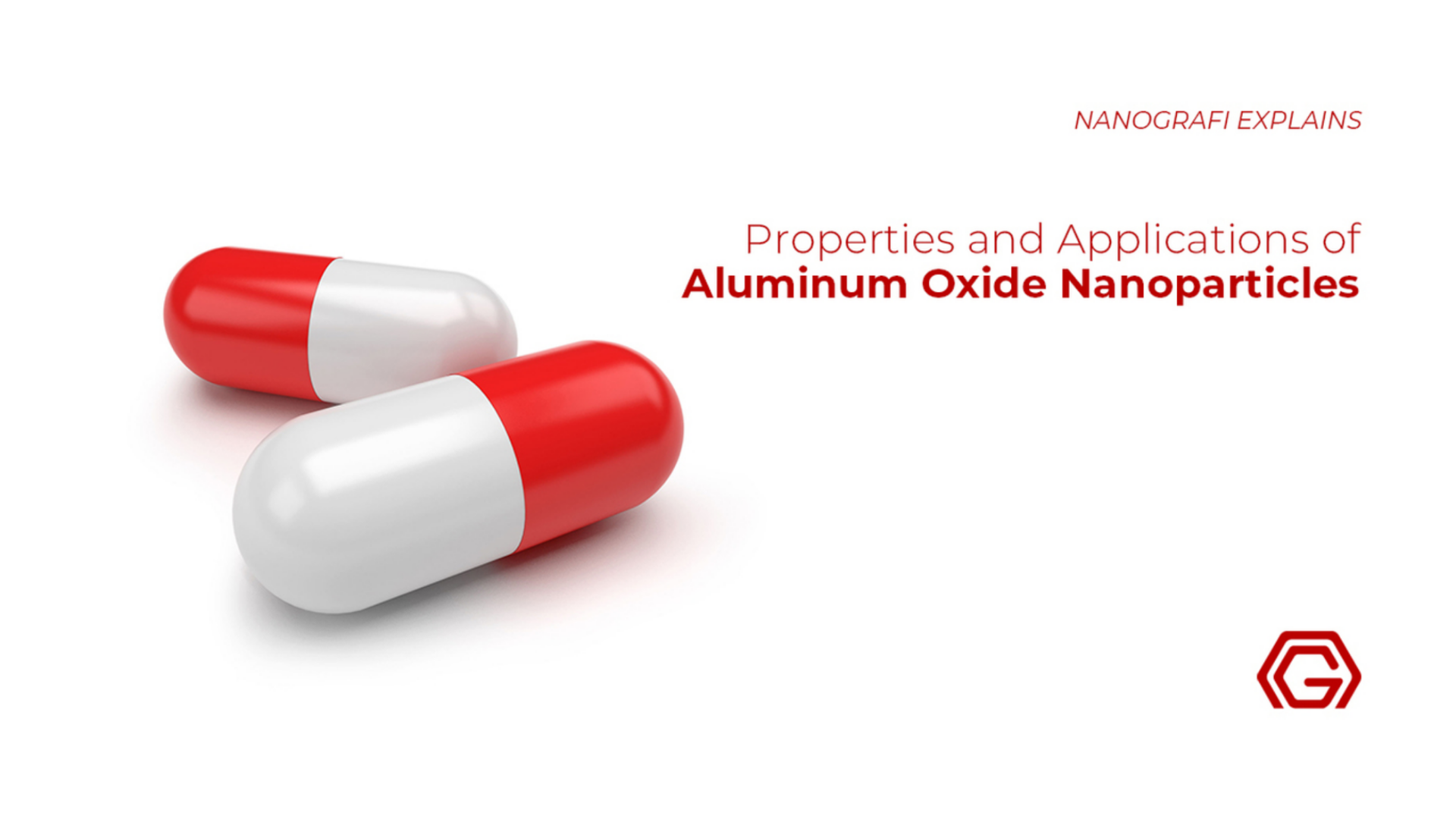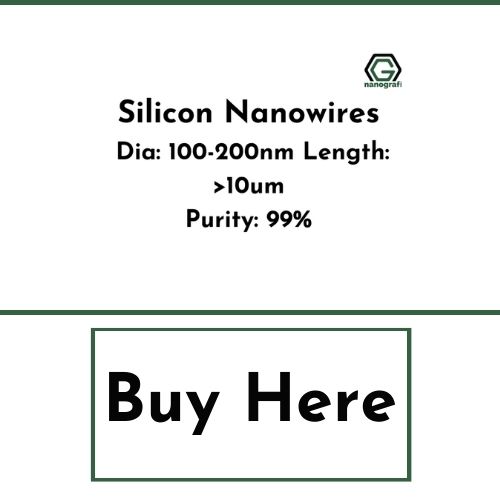Silicon Nanowires: Synthesis and Application Areas
Silicon nanowires, also known as SiNWs, are a kind of semiconductor nanowire that is usually made from a silicon precursor through catalyzed growth or by solid's etching from a liquid or vapor phase. Remarkable characteristics are possessed by SiNWs and they aren’t present in bulk 3-dimensional silicon materials.
There are various applications of silicon nanowires including non-volatile memory, thermoelectrics, nanowire batteries, and photovoltaics. In various ways, silicon nanowire-based devices possess characteristics that outperform their common counterparts, because of the remarkable quasi 1-dimensional electronic structure and the high surface to volume silicon ratio. The choice of the method of fabrication is linked strongly to the target application. However, their remarkable characteristics enable implementation of the new functionalities like device-level reconfigurability, and new device concepts like the junctionless transistor. Due to the high surface-to-volume ratio, the device possesses an extremely high sensitivity. Thus, the expectations are that soon the evolution of silicon nanowire technology will be seen as an extremely versatile supplement to the current silicon technology. Here, the synthesis and applications of silicon nanowires in different kinds of devices are discussed.
Introduction
Nanowires are nanostructures having diameters in the nanometer scale (in tens of nanometers of area). Production of the insulating (TiO2, SiO2) nanowires, semiconducting (GaN, InP, Si) nanowires, and conducting (Au, Pt, Ni) nanowires is possible and can get various real applications. Top-down methods like lithography and bottom-up methods are the basic methods for synthesizing nanowires. Chemical composition determines the bottom-up method and it is the most suitable method to produce nanowires as one can accurately control the nanowire's important parameters like growth direction, chemical composition, level of doping, length, and radius. Still, the nanowires are in a stage of experiments, and there is no usage of them in real applications.
According to the latest investigations, nanowires can be utilized for the electronics of next-generation and extremely sensitive biosensors as the building blocks. Nanowires also possess another real application and it is the nanoelectromechanical systems (NEMS) because of their high Young's moduli. Nanowires can aid nanorobots in generating and conducting their desired energy. Silicon nanowires are famous nanomaterials because of their excellent mechanical and electrical characteristics.
The field-effect action can control the conductivity of the silicon nanowires. Silicon nanowires are semiconducting nanowires. Due to these reasons, there is a possible usage of silicon nanowires for the next generation of advanced sensors and field-effect transistors. Due to their excellent characteristics and similar performance to the best planar devices, silicon nanowires are one of the candidates for the new generation of electronics.
New advanced sensors will be required in biochemistry and medicine for discovering new drugs and diagnosing diseases. The requirement of these sensors is because they need analysis in high resolution, low cost, and fast real-time responses. Silicon nanowires are a good option to detect viruses, nucleic acids, and metal ions species because of the unique characteristics of the silicon nanowires like biocompatibility, tunable optical and electrical characteristics, and excellent surface-to-volume ratio. They are field-effect transistor (FET)-based devices typically.
Silicon nanowires are made up of three electrodes. Those 3 electrodes are the following; a source electrode, drain electrode, and gate electrode. Source and drain connect the semiconductor channel whereas the channel's conductance is maintained and regulated by the gate electrode. Silicon nanowires' location in the semiconductor channel between the drain electrode and the source electrode is the reason for this device's capability to sense.
Characteristics of SiNWs
Thermal Characteristics
When utilized in experiments or applications, silicon nanowires aren't straight and possess a curved shape. Their curvature can affect the phonon transport And can also have an impact on the changes in their thermal conductivity. Nanowire curvature is a means of impedance to the phonon transport as there is a deviation of the phonons from the major heat flow direction, flowing through the nanowire axially. Thus, when there is a decrease in the nanowire curvature's radius, the thermal conductivity is lessened.
When the curvature's radius is one order smaller as compared to the phonon mean free path (MFP), the curvature's effect on the thermal impedance is greater. It's an interesting observation as the wire's proper shaping can be used to control the silicon nanowire's thermal conductivity.
Chemical Characteristics
A significant chemical reaction is natural oxidation and it makes silicon nanowires extremely beneficial in the applications of transistors and sensors. This effect cant be avoided as oxygen-derived effects are made on the pure semiconductor nanowire core’s surface because of it. Experimental measurements showed that if the SiOx layer is properly chemically modified then the silicon nanowire's hole motility can be increased by a magnitude of two.
Optical Characteristics
It’s because of their photo elastic characteristics that if the nanowires are exposed to light, they can display mechanical strain effects as light has a wavelength relative to their energy bandgap.
Mechanical Characteristics
When it comes to device processing, the nanowire's mechanical characteristics hold significant importance as external stress, induced strain, and temperature changes can change the nanowire's electrical conductivity because of internal dislocations. During VLSI (Very Large Scale Integration) processing, the tensile and compressive stresses can result in failure because of electro-migration and delamination. According to findings, the less number of defects per unit length and high aspect ratio relative to the bulk materials gives nanowires their interesting mechanical characteristics.
Nanowires are 1-dimensional systems. The utilization of nanowires can be seen in the field of NEMS (nano-electromechanical systems), and sensors. They can store elastic energy and are extremely robust materials as they have high Young Modulus and tensile strength. Moreover, it’s because of their remarkable elastic characteristics that silicon nanowires with high oscillating frequencies (100 MHz up to 1 GHz) can build nanoscale resonators.
Electrical Characteristics of SİNWs
Understanding the semiconductor nanowire's electrical characteristics is significant as they tell whether the silicon nanowires are suitable for being utilized in sensors and electronics applications. Four atoms are possessed by the silicon nanowires per unit cell. Three conductance channels are found if the crystalline is perfect. If 1 or 2 atoms are removed or added, you can observe the conductance variations. Therefore, the nanowire's crystalline structure affects the conductance.
Changes in the conductivity can be caused by variations in the surface conditions, like carriers' scattering phenomena in the nanowires. When there is a change in the diameters of the nanowires, there are observations of the scattering phenomena. Their conductivity is extremely sensitive to the excitation of the surface by external charges because the nanowires have a large surface-to-volume ratio. This significant characteristic enables them to detect single-molecule and usage of silicon nanowires in the biosensors.
To get more information about nanoparticles,
you can read our blog post here.
Fabrication
When it comes to silicon nanowires, there are various methods of their fabrication and they can be widely classified into methods that start with bulk silicon and remove the materials for yielding the nanowires, called top-down synthesis too, and methods utilizing a vapor or chemical precursor for building nanowires in a process that's considered to be bottom-up synthesis in general. Numerous factors like surface chemistry, carrier densities, and diameters, can be used to determine the SiNW biosensor’s efficient and effective performance.
Processes like e-beam lithography, photolithography, oxide-assisted growth (OAG), and vapor-liquid-solid (VLS) are included in the bottom-up approach. There have been reports of the VLS techniques adopted to fabricate silicon nanowires along with their applications as biosensors.
Bottom-up Synthesis Methods
- Vapor-liquid-solid (VLS) growth - a catalyzed CVD type that usually utilizes gold nanoparticles as catalyst (or 'seed') and silane as Si precursor. In 1964, there were first reports of the synthesis of silicon nanowires through VLS by utilizing silicon substrate integrated with the liquid Au droplet. Metal-catalyzed (Al, Pt, Fe, Au, etc.) are deposited on the silicon wafer in VLS, and then the chemical vapor deposition (CVD) technique is used to augment the growth of the silicon nanowires. Functioning as the silicon gas's source, SiH4 gas will convert into silicon vapor and be dispersed through a metal catalyst for forming metal-silicon alloy droplets. The silicon will precipitate out from the droplets of the metal silicon forming silicon nanowires as the silicon diffuses across the metal nanoparticle catalyst resulting in a condition's supersaturated state.
- Precipitation from a solution – A VLS method's variation which is known as supercritical fluid liquid-solid (SFLS), utilizes a supercritical fluid (organosilane at high pressure and temperature) instead of vapor as a Si precursor. In solution, the catalyst would be a colloid, like colloidal gold nanoparticles, and there is a growth of the silicon nanowires in this solution.
- Molecular beam epitaxy - a PVD’s form implemented in the plasma environment.
Thermal Oxidation
After chemical or physical processing, either bottom-up or top-down is done for achieving the initial silicon nanostructures, there is often the application of the thermal oxidation steps for attaining the materials with the required aspect ratio and size. A useful and distinct self-limiting oxidation behavior is displayed by the silicon nanowires however because of the diffusion limitations, the oxidation ceases effectively but those limitations can be modeled. Accurate control of aspect ratios and dimensions in the silicon nanowires is allowed by this phenomenon and it has been utilized for achieving silicon nanowires of high aspect ratios with less than 5 nm of diameters. Silicon nanowire's self-limiting oxidation holds value towards the materials of the lithium-ion battery.
Top-down Synthesis Methods
The modalities behind the top-down approaches to fabricating silicon nanowires are explained by various researchers in reports. The top-down approach includes the fabrication of silicon nanowires starting from the bulk material, scaled down into distinct Silicon nanowires that can be made by using the process of nanolithography techniques for instance nano-imprint lithography, electron beam lithography (EBL), and so on. Material removal techniques are used in these methods for producing nanostructures from a bulk precursor
- Metal-assisted chemical etching (MaCE)
- Thermal evaporation oxide-assisted growth (OAG)
- Ion beam etching
- Laser beam ablation
Metal-Assisted Chemical Etching
The most simple and cheap method to synthesize SiNMs is this. Two main stages are composed in this method, as electroless metal (gold, platinum, nickel, silver) deposition on the silicon wafer and the chemical etching in the fluoride-ion-based solution follows it. Here, electrons are attracted by the silver ion from the silicon substrate that stemmed from the silver nanoparticle’s deposition on the surface of the silicon. The silicon is oxidized underneath the silver nanoparticle, and the HF’s action forms the holes. The formed holes function as a sinking route to Ag nanoparticles residual thus producing silicon’s lateral and longitudinal suspension, therefore starting the fabrication of the arrangements of SiNWs.
Applications of SiNWs
Silicon nanowires are an excellent choice for a broad number of applications that draw on their remarkable physicochemical properties because of their excellent chemical and physical characteristics of the silicon nanowires. Their characteristics are different from the characteristics of the bulk silicon material. Charge trapping behavior is shown by the silicon nanowires and it leaves such value systems in applications necessitating electron-hole separation like photocatalysts, and photovoltaics. All of these characteristics make silicon nanowires attractive to being utilized in biological sensors, chemical sensors, logic devices, and flash memory, as field-effect transistors, metal-insulator semiconductors, and nanoelectronic storage devices.
Silicon nanowires display the capability of undergoing major lithiation when maintaining the electrical conductivity and structural integrity and they are of specific merit as those anodes. They are effective thermoelectric generators with high efficiency as they possess both, a low thermal conductivity because of the small cross-section and a high electrical conductivity because of the doped Si's bulk characteristics, and join them. Silicon nanowire sensors' experimental applications include detecting gas sensors, arrays for parallel molecules, glucose, single viruses, drug discovery, pH, DNA, and proteins.
Single Virus
A challenge for SiNW biosensors and a significant fact for medicine is detecting a single virus molecule. An antibody receptor was seen covering the p-type SiNW sensor’s surface in an experiment.
pH
pH sensing is sensing the concentration of hydrogen ions. Hydrogen ions can be detected by a p-type SiNW when 3-aminopropyltriethoxysilane is used to modify its surface. Silanol and amino groups function as a catalyst and therefore change the SiNW’s surface charge.
Glucose
There have also been reports of the detection of glucose. The glucose oxidase (GOx) enzyme is used to modify the surface oxide layer of a silicon nanowire. When glucose was near the nanowire's surface, there were observations of a change in the conductance of the silicon nanowire.
Proteins
The molecule biotin is used as a binding material to achieve the detection of the protein that is streptavidin. Biotin is used as it is highly selective to this protein. Protein’s conduction is rapidly increased to a constant value when it reaches the silicon nanowire’s surface. There is no change in the conductance in case the molecule biotin is absent, displaying the SiNW sensor's high sensitivity and selectivity.
DNA
Detecting the DNA is possible when the uncharged peptide nucleic acid (PNA) is utilized as the bonding material on the p-type SiNW’s surface. The design of PNA was such that it could only bind to the wild-type DNA. Due to DNA's negative charge, silicon nanowire's conductance increases fastly.
Drug Discovery
Discovering new drugs is important to developing pharmaceuticals. The process is similar to the last application examples although the change in the conductance of silicon nanowires is utilized for evaluating how good is the organic molecule binding to the enzyme or protein (possible receptors). Thus, SiNW sensors enable quick and easy characterization of the drugs.
To get more information about nanoparticles,
you can read our blog post here.
Sensor Arrays
There can be an integration of the silicon nanowires into arrays that can be beneficial in analyzing complicated situations. SiNW elements' reproducibility is important in the array for the complete sensor's performance. Good reproducibility is possessed by silicon nanowires.
Gas Sensors
SiNWs can also have applications as gas sensors. It was demonstrated when the palladium nanoparticles (Pd particles) were used to coat the n-type SiNW’s surface. H2 gas molecules are targeted by this sensor and it displays no response when it's exposed to N2O or NH3 gasses. Although the current that was flowing through it was increased when the hydrogen gas flowed over the sensor. Therefore as compared to being utilized as chemical sensors, the SiNW sensors possesses high selectivity values when they are utilized as biosensors.
Fluorescence’s Sensor-Utilized SiNWs
A novel AuNP-SiNW-based molecular beacons (MBs) was recently demonstrated by Su and co-workers for high sensitivity multiplex DNA detection. According to reports, stout stability was displayed by the AuNP-SiNW-based MBs in thermal stability at 10–80 °C and broad salt concentrations in the 0.01-0.1 M of range.
FET Sensor-Utilized SiNWs
As compared to the three electrodes, the silicon nanowire sensors are the classic FET-based devices. At the outer surface of the silicon nanowire, a change in the electric field is stimulated by the variation in charge density. Gao et al. recently used a SiNWs-FET sensor through the top-down approach to make high-performance direct time and label-free for the detection of DNA. Gao et al. and their colleagues recently enhanced the sensitivity of the SiNWs-FET sensor efficiently in their research work by doing the optimization of the qualities like the buffer ionic strength, probe concentration, and gate voltage. In short, the promising nanomaterial sensing in the coming future is silicon nanowire.
SiNW Transistors
Numerous real-life applications can be found by the SiNW transistors like ring oscillators, high-efficiency programming, wearable electronics, smart cards, lasers, 3-Dimensional computing, data storage, displays, etc. Below is the summarization of some of them.
Ring Oscillator
Ring collector is another experimental application of the silicon nanowire transistors. It has many benefits over the conventional methods of fabrication. The main one is that during fabrication, complete device integration is obtained due to SiNW’s high reproducibility. Moreover, the SiNW ring oscillator's high performance and great stability give it superiority over the ones that were made with conventional planar devices.
Crossed Nanowire Architecture
Various electronic device elements are allowed by the crossed nanowire architecture (gates, diodes, transistors, etc.) to be made with high integration density because the silicon nanowires have a small diameter. One can configure crossed NWFETs from one NW as the active channel and as the gate electrode from the second crossed NW, separated on the silicon nanowire surface by a thin SiO2 dielectric shell, with the gate present on one or both crossed nanowires' surface. NOR gate's creation is the first example of the crossed nanowire architecture. It can be seen that when its input is both low according to expectations, only then does the gate's output go high.
Memory Array
It is based on silicon nanowires that are grown vertically. At a low cost of fabrication, high-density memory is provided with fast accessing capability or programming due to the small cell size and remarkable array architecture. Moreover, there is a lower cost to density ratio and a higher speed to density ratio.
Conclusion
Bottom-up techniques can be used to grow silicon nanowires with high precision. It is because of their excellent characteristics as compared to the other nanomaterials that the silicon nanowires are capable of being utilized for the evolution of the next generation of nanostructures. The development of nanowires is allowed by their high elasticity and high Young’s moduli. Detection has gone down to the level of a single molecule because of these characteristics and this is a major improvement and is capable of having a remarkable influence on diagnosing diseases and resulting in discoveries of new drugs. Moreover, a direct label-free electrical readout is provided by the SiNW electrochemical sensors and it removes the utilization of the time-consuming and expensive chemical labeling detection.
To get more information, you can visit Blografi.
References
https://en.wikipedia.org/wiki/Silicon_nanowire
https://phys.org/news/2016-10-eco-friendly-production-silicon-nanowires.html
https://www.researchgate.net/publication/311065506_Silicon_Nanowires_and_their_Applications
https://link.springer.com/chapter/10.1007/978-3-319-18293-3_1
https://nanoscalereslett.springeropen.com/articles/10.1186/s11671-016-1618-z
Recent Posts
-
Advanced Materials for Unmanned Aerial Vehicle (UAV) Protection Against Laser
Consider a UAV on a critical mission, rendered inoperative by a sudden laser attack. With the increa …26th Jul 2024 -
Simulation and Modeling of Material Properties
Our world is composed of a dazzling array of materials, each with its own unique properties that dic …19th Jul 2024 -
Advanced Coatings for Superior Corrosion and Wear Resistance
Corrosion and wear pose significant challenges across various industries, leading to substantial eco …12th Jul 2024








